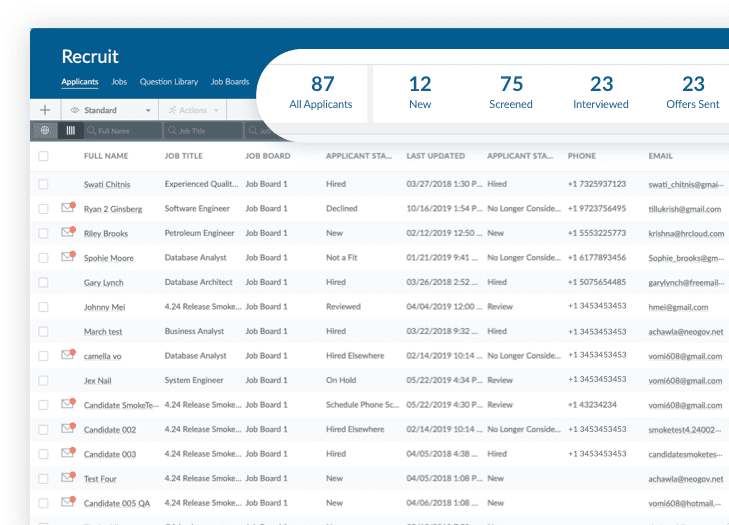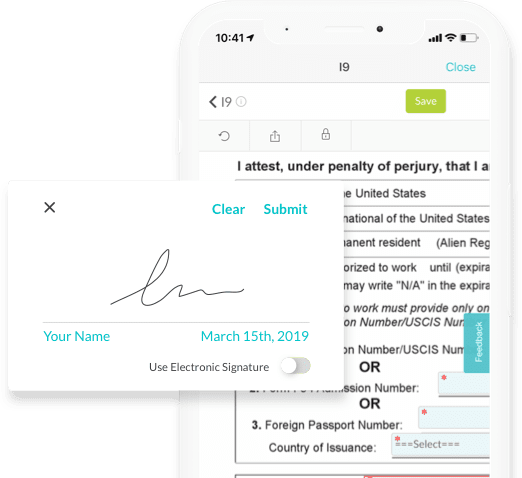Unearthing the Job Market's Hidden Treasures
-4.png)


 Cut onboarding time
by 60%—here's the
Ultimate Checklist
that helped do it.
Cut onboarding time
by 60%—here's the
Ultimate Checklist
that helped do it.

As the labor market evolves, businesses must use all the tools to stay a step ahead of their competitors. Anything that can uncover the market's hidden treasures, enrich the working team, and alert about new candidate trends is in the ally for an HR manager or recruitment team.
Gathering insights with job posting data is the new road many recruiters are taking now. What first seems like loads of repeating data, can power the most successful labor markets, indulging some of the best and unique insights.
What does the job market have to offer?
The job market's hidden treasures are often underestimated, there are a bunch of backstage opportunities that the regular recruiter misses. A report released by the U.S. Bureau of Labor Statistics showed that about 70% of all job openings are never advertised. Even though that type of information is concealed within the network of industry professionals, there are ways HR managers unveil it, that as by using job posting data.
Companies often keep this data hidden so that other companies don't figure out what employees they are looking for and what new departments they plan to open.
For example, if a company is hiring new marketers then it's likely that they are launching a new product or campaign. In contrast, if they are looking for new IT specialists they might be overmaking their website design.
This is the type of information that companies don't share, but those who know how to access it, have a big competitive leverage on their competitors. Now how exactly do they access such data? It can be gathered from job posting data, not only is it instantly available, but it also can be analyzed from various perspectives leading to tons of insights.
What can you find in job postings datasets?
Job posting data is full of information, so much that it's even impossible to define. Each data point and data connection forms new details of insights into the skills and qualifications of employers, salaries, ranges, benefits, the company culture, and more. Here are some of the most popular data categories that are used in the job market:
-
Job titles and descriptions. When such data is grouped and analyzed, recruiters can notice trends in what job positions are most popular, which take the longest to fill, what new positions have entered the market, and others.
-
Salary ranges and bonuses. Setting a reasonable salary can be tough, it’s important that you do not fall behind competitors and don't set a salary too high. With job postings, you can analyze what others' benefits and salaries offer and then compare the data to your benefits and set an ideal salary based on it.
-
Benefits offered by companies. When data is transferred to graphs you can often notice small changes or migration of employees. You can often find the reasons for migration in the data about company benefits, like paid time off, health insurance, training, etc. When two salaries are similar but one of the companies offers many benefits, it is pretty straightforward where the employee will migrate.
-
Job requirements. The same job position in different companies can consist of different requirements. Even though each job position is altered for its company specifics, you can find out with data which of the requirements work best.
During the hiring process, it’s very helpful to have a centralized platform, where you can manage all applications and see where the insights from newly-gathered job posting data could be applied. For example, Recruit ATS is an advanced applicant tracking system solution that allows HR professionals to build a streamlined recruitment process and effectively manage applications and hiring practices.
Post Jobs, Evaluete Candidates,
and Hire the Best with Our
Applicant Tracking System
Learn More about Recruit
Use job posting data to your advantage
Having access to job posting data means you'll have data at hand before others even start to collect it from various sources. This means that insights into all market trends, competition, and emerging industry shifts will always keep you one step ahead. It’s also great to have trusted HR software to be able to manage those insights according to your needs.
Job posting data is not just going to help you create the best job offerings. To get the best out of it you must know how to use it, so here is a dive into ways you can incorporate the data:
Compare job postings
92% of employees would consider leaving their current jobs if offered another role with a company that had an excellent corporate reputation. Mostly, the corporate reputation relies on a company's job offerings, not only work-wise but also on the amount of paid leaves and the overall company culture.
When putting together a job posting, companies can check out data to figure out what requirements and benefits are most employee luring and learn the best practices from the best market holders.
Discover the labor market
Even when your company isn't looking for new employees, you should always keep track of the labor market, which job positions are most in demand, what new roles are opening up, what skills are mentioned in each posting, and what job positions are slowly phasing out.
It's especially important to keep track of new job roles because once they become popular, it will be tough to find a good specialist for your company. The same goes for positions in demand, you need to cater to your employees in demand so that they stay for someone with a better offering.
Uncover new strategies
As companies get more eager to hire the best employees, they will start to incorporate new strategies and tools for attracting talent. You can use job posting data to detect those tools and consider how to improve them so that they will work for your company.
While working on these strategies, it’s also worth keeping in mind that you would need to have everything set up to retain this newly acquired talent. That’s why HR specialists should also incorporate strong retention practices to ensure new employees are getting the needed support during onboarding and as they start working.
Enrich labor market data
When you think of job posting data overall, the idea is for it to enrich a company's insights, improve its decision-making, and provide a more comprehensive view of the labor market. Even research has claimed that highly data-driven companies are 3 times more likely to show better decision-making.
Companies with a filled employee base can analyze data to understand the evolving industry and then find the right training for their employees. This will free them from searching for new candidates but will allow them to grow together with the market and trends.

Key strategies to customize your job postings using data
Creating the ideal job posting doesn't comply with finding data about the most effective postings and copying them, it's rather about learning from those postings and creating something custom for your company. Here are some strategies and tips you can use to create the ideal job posting with data:
-
Skill assessment. Companies often choose a benefit and build their job posting around it, you need to look into their performance cycle beyond titles and identify your company's core value for employees. It must be a benefit that's hard to find in other organizations and will interest the best of candidates.
-
Goal alignment. Even if data shows that a certain job position is trending at the moment, before jumping on the train with others, you need to align your goals and needs. Decide whether that type of position is needed in your company and if it will actually benefit you.
-
Industry and company research. Invest your time in analyzing data about your specific industry and competitors, and understand their goals, challenges, and strategies. As you understand those aspects, you will be able to set greater goals, overcome your challenges, and build better strategies.
-
Networking. Sometimes dragging a one-of-a-kind employee from company to company isn't an option. That is when you can use job posting data to network with other companies, exchange valuable insights, hidden job referrals, and even employee trading.
Conclusion
As we have established, job posting data is the gateway to uncovering hidden gems of the labor market. The data covers many aspects of the job market, including employee involvement and performance at certain positions, competitors' job offerings, and more. With this data, you can learn many new insights and stay ahead in the game with well-created job postings that attract top talent.
Author Bio:
This article is written by a marketing team member at HR Cloud. HR Cloud is a leading provider of proven HR solutions, including recruiting, onboarding, employee communications & engagement, and rewards & recognition. Our user-friendly software increases employee productivity, delivers time and cost savings, and minimizes compliance risk.
Keep Reading
Specialized Onboarding Software for Healthcare to Reduce Admin Work and Scale Hiring Fast
Imagine this: a women’s health clinic hires two new nurses, only to lose both within
A Closer Look at HR Cloud-ADP Integrations
ADP is the gold standard for payroll and core HR management. But if you’ve ever tried to
Retention Reset: How to Keep Your Best Talent in 2025
More employees are walking away from their jobs in 2025 not just for better pay, but for
Like What You Hear?
We'd love to chat with you more about how HR Cloud® can support your business's HR needs. Book Your Free Demo

Build a Culture of Recognition. Boost Engagement. Guaranteed.
Workmates empowers employees to stay informed, connected, and appreciated—whether they’re on the front line, in the office, or remote. Recognition drives 12x higher engagement.Trusted by industry leaders in every sector




Cut Onboarding Costs by 60%.
Take the confusion and follow-ups out of onboarding with automated workflows, digital forms, and structured portals—so new hires ramp faster 3X quicker.Trusted by industry leaders in every sector





